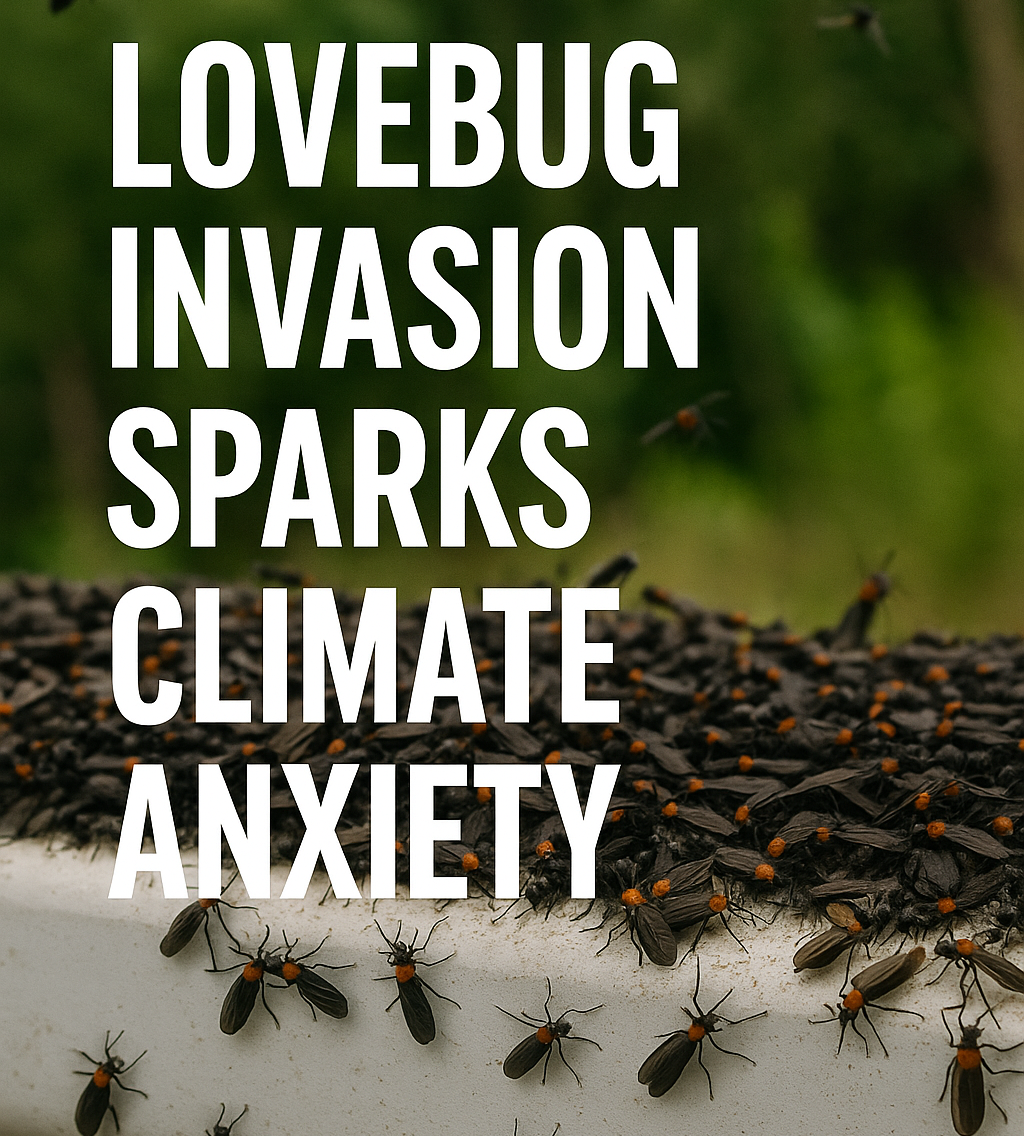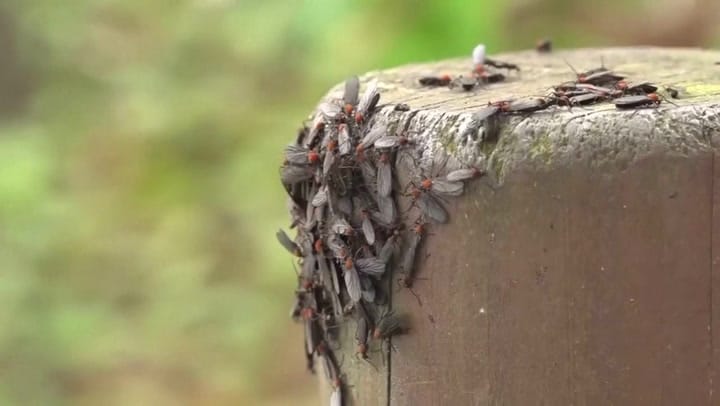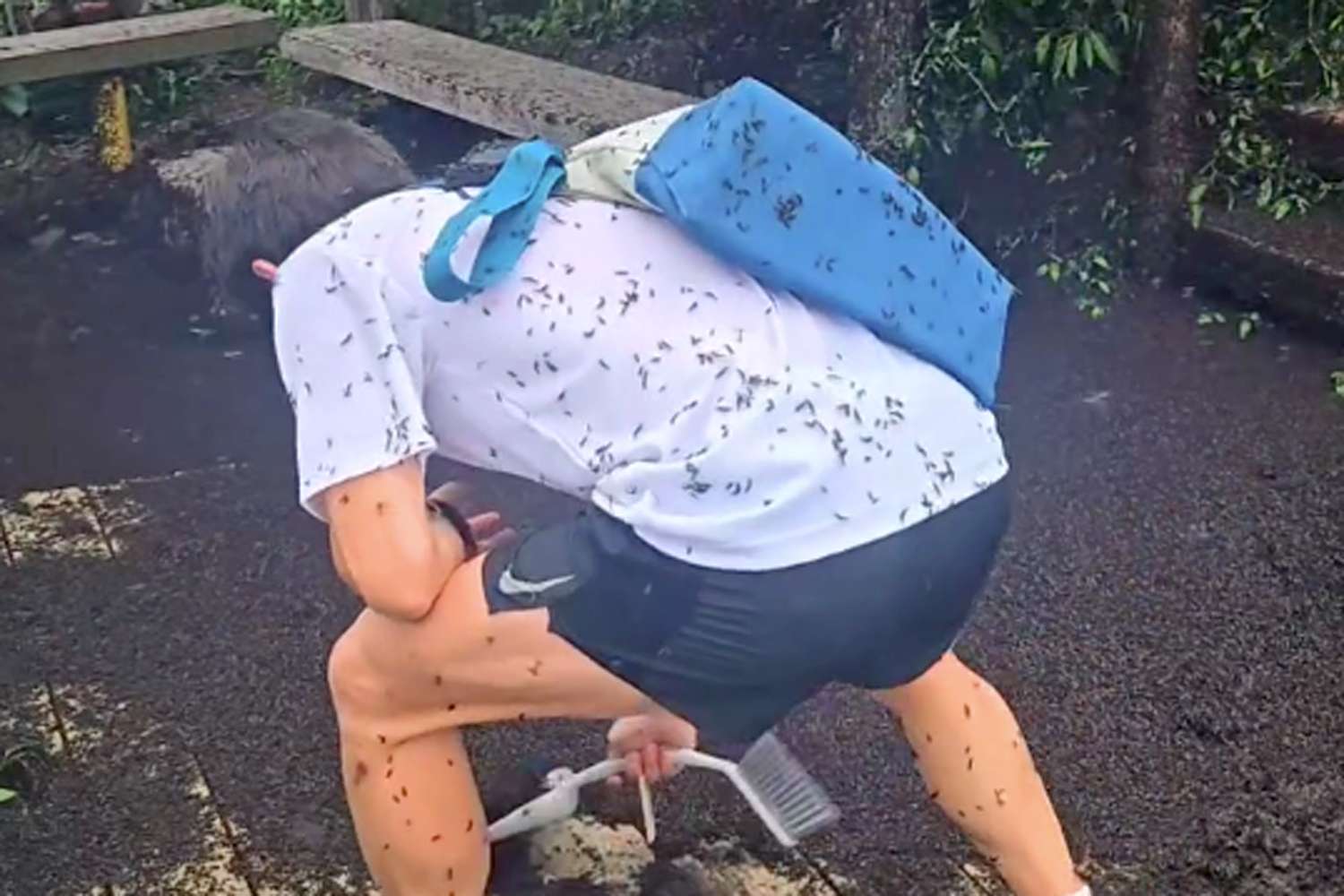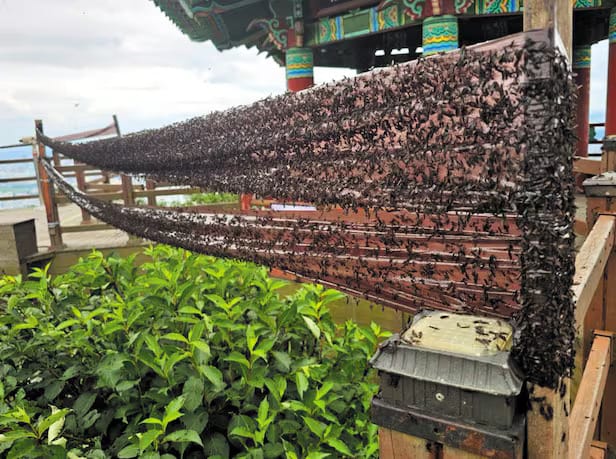South Korea's Lovebug Outbreak: What Are These Insects and Why Are They Everywhere?
South Korea is battling a bizarre invasion: swarms of black-bodied lovebugs have taken over urban skylines. From climate change to invasive species, this blog investigates the ecological chaos behind the outbreak, its impact on public life, and the nation’s scramble to respond.

SEOUL, July 9, 2025
From Seoul’s tall buildings to Incheon’s mountain trails, South Korea is facing a huge problem. This crisis comes not from storms or political conflicts, but from billions of tiny black insects called "lovebugs." These insects are harmless to humans but hard to ignore. They have covered public spaces, invaded homes, damaged cars, and caused one of the strangest environmental changes South Korea has seen in years.
How did these tiny flies become such a nuisance? Why are they here now? And what does this reveal about our changing environment and mental state? Let’s explore.
Meet the Lovebugs (Plecia longiforceps/P. nearctica)
These insects fly in mating pairs, which gives them nicknames like “double-headed flies” or “honeymoon bugs.” Originally from subtropical areas in China, Taiwan, Japan, and later the southern U.S., lovebugs first appeared in Korea in Incheon in 2015. But their numbers have exploded in recent years.
Adult lovebugs live for only about 3 to 7 days. During that time, they breed quickly, laying hundreds of eggs in warm, moist soil before they die. While they don’t sting or spread diseases, their overwhelming numbers disrupt everyday life.
By late June and into July, swarms so thick they look like black clouds cover city streets, hiking paths, and even cafes and subways. Viral videos show mountain tops piled high with dead bugs, creating a bizarre insect apocalypse.

Why Now? Climate, Cities, and Sudden Swarms
Urban heat and climate change
Seoul’s concrete landscape holds in heat. Over the last 30 years, average national temperatures have risen by about 1.4 °C. The heat island effect allows lovebug larvae to survive and grow in areas that were previously too cold.
Ju Jung-won from the Korean CDC notes that higher temperatures have created an environment similar to their native habitat. Seoul experienced the warmest and wettest spring on record, creating ideal conditions for breeding.
Invasion from nearby ecosystems
Genetic studies indicate these lovebugs came from southern China, probably the Shandong Peninsula, and moved north. They have established permanent populations. Now, peak sightings occur every summer for several weeks.
Lack of natural predators
As a non-native species, lovebugs arrived without natural enemies. Local birds and insects don’t see them as food. In Florida, it took around 30 years for local animals to adjust. Korea is only just starting this process. With each passing year of swarming, natural control could slowly improve, but progress will be very slow.
Public Life in an Insect-Driven Reality
Issues on trails, storefronts, and windshields
From Incheon’s Gyeyangsan to Seoul's streets, people struggle to open doors or even breathe. Kim Jaewoong, a welder, described feeling like he was in “the apocalypse,” with swarms so thick that inhaling introduced bugs into his lungs.
In hiker footage, dead lovebugs can pile up four inches deep on steps and observation decks.
Economic and cleanliness problems
Businesses are worried about cleanliness, with bugs crawling on counters, in stores, and on menus. Seoul authorities recorded 9,296 complaints in 2024, up from 4,418 in 2023.
Car owners are dealing with lovebug stains that damage windshields and paint, a common issue in U.S. states like Florida, where these insects have thrived.
The pests go viral
The infestation quickly became a meme. BTS members RM and Jin were seen reacting to lovebugs, and a YouTuber even cooked them into a "burger patty."
One Instagram video from Gyeyangsan went viral, gathering 9 million views, featuring a man trying to swat them off himself with a shovel. That clip alone caused a 60% rise in online searches for “lovebug prevention.”
Memes and taglines like “bug-repellent couture,” along with community guides, blended humor with practicality in digital discussions.

Government and Public Health Response
Chemical control and other methods
Officials refer to lovebugs as “beneficial” since they assist in pollination and organic decomposition. They warn against using pesticides that may harm other species.
Instead, they suggest:
- High-pressure water spraying
- Sticky pads and light traps
- Wearing dark clothing, as lovebugs are attracted to bright surfaces
At Gyeyangsan, crews use presses and hoses to remove dead bugs, employing modified fogging tools without chemicals.
Pilot programs and technological solutions
Local teams in Incheon are testing “solar vacuum traps” at bus stations. Seoul is introducing AI-assisted urban sanitation systems, including sensors and smart drainage to prevent larva buildup, plus UV lights on city buildings.
Research continues into fungal pesticides that specifically target larvae, providing a more precise method of control that is gentler on the broader ecosystem.
Ecology at a Crossroads
Invasive species and changing ecosystems
Lovebugs don’t bite, but their presence alters predator-prey relationships. Birds like magpies and sparrows are now feeding on them, indicating that natural adaptation is underway.
Scientists are concerned about unintended effects. Will predators move into cities, ignoring other food sources? Will lovebug larvae outcompete native soil organisms? The long-term consequences remain uncertain.
Climate signals, not one-time events
Ecologists view this situation as a climate warning: lovebugs spread not only because of rising temperatures but also due to “wet-heat windows” where rain and heat align during breeding. Such weather patterns are increasing in South Korea, marked by hot, humid springs and summers, alongside longer rainy seasons.
This outbreak adds to Asia’s growing list of ecological disasters, joining yellow dust, jellyfish blooms, and typhoons.
The Psychological Impact: Eco-Fatigue Becomes a Concern
Koreans feel this issue goes deeper than simple insect annoyance—it’s called eco-fatigue, the exhaustion from dealing with constant environmental challenges.
People are facing yellow dust storms, record-breaking heat waves, more typhoons, and now insect outbreaks. Public sentiment leans toward frustrated resignation.
“I cried when I came up here. I was so scared,” Ahn So‑young said in tears during the swarm cleanup on Gyeyangsan
Shared memes and jokes hide a deep anxiety: the fear that nature's limits are being pushed. This outbreak is more than a local oddity; it's a sign of our fragility as ecological systems break down.

What Lies Ahead? Future Trends and National Resilience
Recurring pest problems
This likely won’t be just a one-time summer issue. Climate models predict that soil-temperature conditions will increasingly match breeding cycles, meaning yearly outbreaks—and possibly the emergence of other invasive species—may become normal.
Policy and joint efforts
South Korea will focus on improving port biosecurity and will work with China and Japan on monitoring pests. This cooperative approach will help catch future risks earlier.
The upcoming Climate Resilience Urban Action Plan will integrate urban resilience, featuring climate-adaptive infrastructure and ecological forecasting systems.
Technological adjustments
Seoul’s smart-city initiative will include alerts for bug swarms, using AI, sensor networks, and predictive apps. Local apps will warn hikers about "bug pressure zones." Schools will teach "insect hygiene," while social platforms will help map outbreaks collaboratively.
Beyond the Swarm
The lovebug invasion may seem humorous, but it signals a serious change. As climate patterns shift, ecological stability is fracturing in unexpected ways. This subtle insect drama reflects larger issues—the return of invasive species, new biological realities, and urban communities struggling to keep pace.
South Korea’s response through public education, restraint with chemicals, and tech-driven adaptations offers one potential strategy. Yet, questions linger: Can policies evolve quickly enough? Will we address ecological complexities fully, or will each solution bring about new issues?
Question to ponder
When climate-driven ecological events like lovebug swarms become common occurrences, how should new technologies, pesticides, and city planning balance immediate human relief with the long-term health of ecosystems?
Sources
- Washington Post: "Lovebugs vex South Korea..." abcnews.go.com+2washingtonpost.com+2independent.co.uk+2
- People.com: Viral video & complaint stats japantimes.co.jp+3people.com+3people.com+3
- AP News, ABC, Reuters: Swarm updates, pest control measures
- The Guardian, Independent: Climate and predator adaptation analysis
- Phys.org / ResearchGate: Genetic and modelling details
- Images sourced from Washington Post, People.com, Independent.co.uk, and Chosun.com covering July 2025 reports on South Korea’s lovebug outbreak.
- Wikipedia: Context on climate trends in South Korea




